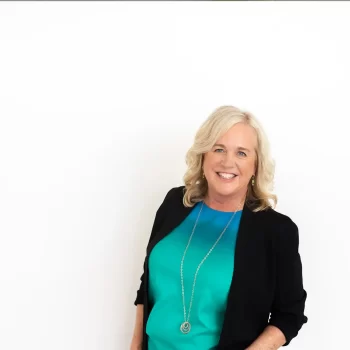Why Make a Customer Journey Map?
A customer journey map is simply a tool you can use to better understand your customers so you can craft a more successful marketing strategy.
How will it help me create a better marketing strategy?
Mapping your customer’s journey will help you understand HOW they are thinking and feeling from the moment they first discover you to when they become a loyal advocate for your brand. Using this tool will provide a framework as you think through WHAT you can do to influence your customer on each step of the journey to purchase and repurchase.
What is a customer journey map?
Ok. Let’s start at the top.
A customer journey map is less an output and more of a process. In the end, you may create a written document or graphic you can use to communicate with your team or an outside agency, but the most important part of it is the thinking process.
The customer journey map acts as a companion to the customer persona tool that answers WHO? and WHY? questions and the customer lifecycle tool that answers WHERE? and WHEN?
Why will a customer journey map make my marketing strategy more successful?
If you build it, they don’t always come. Customers don’t always behave the way you think they will. Their choices are shaped by convenience, cost and communication, and these influences aren’t always obvious.
That’s why market researchers and practitioners have grouped together a number of tools that are meant to help you uncover what your customers believe and how they make choices.
These include:
- The customer persona — to help you characterize and identify your customer
- Customer journey mapping, to help you understand how your customers think, feel and make decisions, AND
- ACTUALLY TALKING to your customers or potential customers
In reality, you won’t do these three processes linearly, but more iteratively. Because the learnings you gather at each step will deepen your understanding and lead you to refine the outputs.
And once you’re finished with the process as a whole, you will have a much better idea of how to apply various marketing strategies and tactics in order to help your customers find and benefit from your solution.
The bottom line is that too often marketing turns into a one way activity driven by the entrepreneur. When you develop a product you’re passionate about, it’s normal to believe that everyone will be as passionate about the problem and your solution as you are. But often, this is the exact reason why small companies fail.
What most entrepreneurs discover AFTER talking to some customers (or potential customers) is that the customer’s way of thinking about the problem and possible solutions can be quite different than the initial assumptions.
The entrepreneur that understands the customer better wins.
Every time.
How do you make a customer journey map?
Developing a customer journey map is best undertaken as a discovery process in four steps:
- Start with a template of the customer lifecycle
- Talk to your customers
- Document their journey
- Create your strategy
Start with a template of the customer lifecycle
The template for the customer journey map is something called the customer lifecycle. It’s built on a well researched and documented psychological model of how consumers and/or companies make purchasing decisions, and I’ll go in depth on that next week.
In the meantime, the airplane view is that the purchase decision process includes a series of steps where a brand creates a relationship with the customer that results in them giving you money. Those steps include:
- Awareness: How does the customer come to discover and seek a solution to their problem?
- Discovery: How do they come to understand that your solution can solve their problem?
- Consideration: How do you stack up against the competition?
- Conversion/Sale: How are they convinced to give you their money?
- Customer Relationship/Loyalty: How does the customer feel about the company and the product after the purchase? Are they delighted? Are they inspired to make another one?
- Advocacy: Do they tell their friends and colleagues about you?
You will often see this list (or parts of it) referred to as the sales or marketing funnel — a concept that was established more than 100 years ago. But today, we know that new customer acquisition is harder and more expensive than cultivating existing customers, so the template for most funnels now includes a return loop that includes your relationship to the customer and your ability to inspire advocacy.
Talk to your customers
Once you have the template, the next step is to work through how your customer is thinking and feeling at each step in the process. At large companies this may include ethnographic research, qualitative and quantitative studies, customized software and million dollar investments.
But if you’re reading this, I assume you’re a small or medium sized company and that’s not on the table. But you know what is? Talking to your customers.
If you’re working on your marketing strategy, I recommend you start with your customer persona. Once you’ve got a picture of who they are (or who you hypothesize they are), it’s time to go find some people (or existing customers) who fit that persona and ask them questions about how they make decisions to purchase products or services like yours.
This doesn’t have to be a big deal or a huge time suck. It could be as few as 3-5 conversations if you’re just starting out.
Document it
You can capture your thinking in a document or if you’re more visual maybe in a presentation, but definitely put it all together. The process of writing it all down helps you make new connections, recognize patterns and deepens your understanding.
Create your strategy
This is the fun part. At this point you should have a written document describing what your customer is looking for when they go to solve their problem, what they look for in a solution and what’s important to them in their decision making.
Take all that information and put yourself in their shoes and think about how you might create an experience with your brand that will lead them from discovery to purchase to raving fan.
The tactics and tools you use to build that experience for them is your marketing strategy.
If you’re looking for a brainstorming companion for this, check out my learning guide 52 Ways to Grow Your Business that are NOT Social Media. It’s packed with ideas on ways you can impact your product, pricing, positioning, promotion and people to create a branded customer experience that will help people find and purchase your solution.
Wrap Up On the Mapping the Customer Journey
If you haven’t created your customer persona(s) yet, start there. Approach that project as well as mapping your customer journey as a discovery process. Your understanding is going to keep evolving as your product develops and as your company grows.
And if you take nothing else away from this post, remember that you have to actually talk to some customers or potential customers. I know it is time consuming and might push you out of your comfort zone, but the time you’ll save in missed marketing opportunities will be spectacular.




